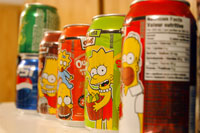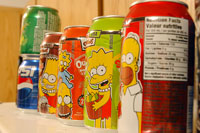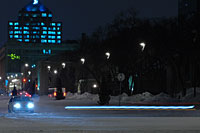Tutorials
Aperture
Depth of field
Exposure
Field of View primer
Home made ring flash
Special Flash Effects
Tutorials are given a difficulty rating out of five stars(*). Five stars being
the hardest to master.
|
Exposure
tutorial -Article and photos by Dan
H.
What it is and how and when to use it.
Difficulty level- ***
Equipment - Any camera with manual control over both shutter speed and
aperture.
Definition: Exposure is the amount
of light received by a piece of film or the sensor of a digital camera.
Exposure is determined by three factors:
1) ISO
2) Shutter speed
3) Aperture
Exposure factors explained:
1) The ISO is the sensitivity of the film or sensor. ISO is also referred
to as "the speed of the film."
As you increase the ISO you increase how sensitive the sensor or film is
to light, for instance ISO 200 is a good outdoor film for daylight because
it is not very sensitive to light as opposed to ISO 1600 is a good indoor
film and for low light because it is several times more sensitive than
ISO 200. Every time you double the ISO you double it's sensitivity.
IMPORTANT: As you increase the ISO you also increase the amount of grain
in a picture. For this reason be sure to use the correct film ISO or ISO
setting on a digital camera in order to obtain the best results.
2) Shutter speed is the amount of time the photo is exposed for. The shutter
is a mechanical device very similar in appearance to a shutter of a blind
in a window. It normally slides across the film or sensor to expose it.
3) The aperture (or f/stop) is the size of the opening in the lens (or
camera) in other words the amount of light that will be let pass through
during exposure.
Several different variants of these three factors can be used to produce
a correctly exposed picture however, determining exposure depends on the
amount of available light and the artistic effect you want to show with
your picture.
Event specific exposure settings
All exposures depend on the lighting. You should always check your light
meter and try test shots before settling on an exposure setting.
Indoor concert:
-
With flash - ISO 200, f/3.5, 1/30s - This setting will
allow you to expose the subject well but also capture the ambient light.
The flash setting will depend on the distance to the subject, normally
1/2 power
for
3-5meters.
Indoor weddings:
-Without flash - ISO 400-800, 1/60s, f/3.5.
-With flash
- ISO 200, f/3.5, 1/30s
Indoor sports
-ISO 400-1600, f/3.5, 1/90.
You will have to adjust your ISO setting to best suit the lighting. To
achieve motion blur set your shutter speed to 1/40 or lower.
-Flashes are not normally allowed at indoor sporting events.
Try it - examples:
-If you have a row of cans side by side and you want
just one of these cans in focus you would set the aperture to
a low f/stop
number in order to achieve the shallow depth of field however, your
shutter speed would thusly need to be faster to compensate.
If, for the same picture you wanted more than just one can in focus
you would increase the f/stop to a smaller opening (larger number).
|

f/4.2 - Only the lime bottle is in focus
(click for larger example) |

f/8 - The lime, orange and brown bottles are in focus. (click for larger example)
|
|
|
 -If
you want to convey the fast pace of a car moving down the street
during daylight, you would use a slow shutter speed and a high
f/stop number in order to produce a motion blur with the car. At
night with a similar process you can photograph just the lights
of a car as it passes.
1
second at f/8
-Here we see the effect of a longer shutter speed
where the lights of a car have gone across the frame. |
Some photos call for special effects, in the following picture I
didn't want the background to show and just wanted a silhouette
of the models face. To achieve that I used a 1second exposure at
f/3.5.
|
 1s
at f/3.5 1s
at f/3.5 |
For more information about these
factors please see tutorials on: Aperture
- Depth of Field
|

